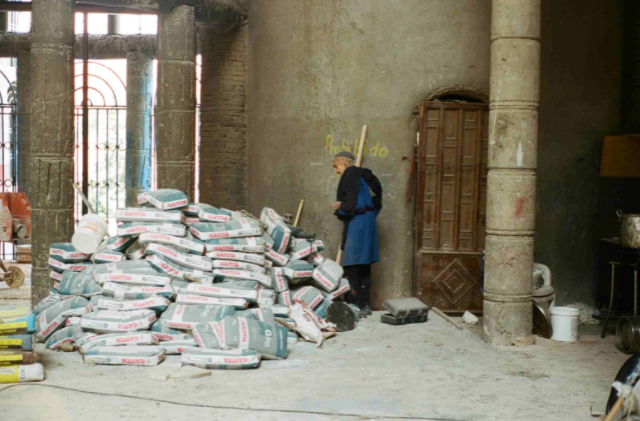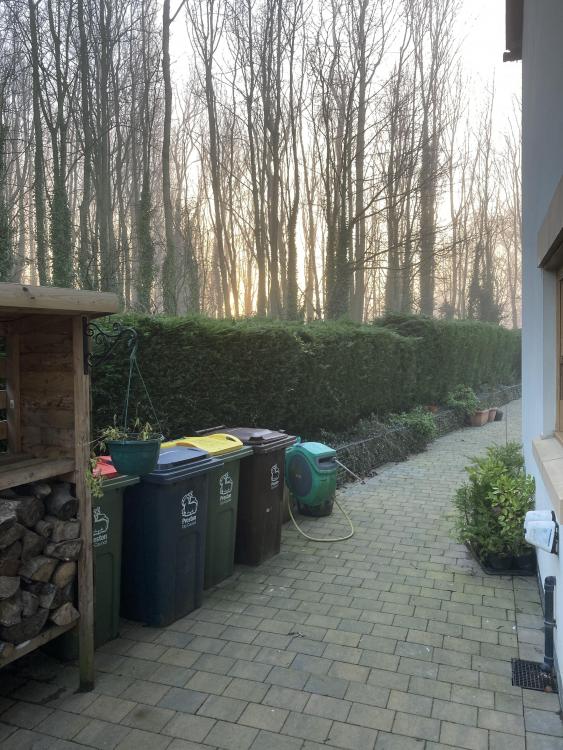Leaderboard
Popular Content
Showing content with the highest reputation on 12/24/21 in all areas
-
2 points
-
I wanted to come back to this thread with an update. With the temp here in Edinburgh dipping to below 5 degrees now more often than not I just couldn't take the noise anymore, as the ecodan was running at full speed all of the time it was below 5 degrees. So I got mitsubishi out and they agreed to replace the whole ASHP. Unfortunately it didn't resolve the issue, at 5.1 degrees runs like a charm and super quiet. At 4.9 degrees it spins up to 63 decibels (I bought a proper decibel reader) and it never, ever comes down until the temp goes above 5 degrees. So in talking with the tech guys at mitsubishi he seems to think this is the freeze stat function kicking in. We checked and the freeze stat is at 5 degrees bang on. He mentioned that if they system is filled with glycol then you can switch this function off and it should then run at normal speed at any temp. So i'm waiting for a refractometer to come today to confirm the glycol settings and then if they are correct, i'm moving to switch off the freeze stat function. For anyone else out there with an ecodan this might be interesting. Also, I want to mention that there is a quiet mode setting for the ecodan r32. If you go into the settings you can find it and there you can choose 3 different settings of quietness. This will reduce the output somewhat, but will solve the immediate noise problem when below 5 degrees. My plan is to remove the freeze stat once I confirm the gycol vs going down the quiet mode as I'd rather have it running at full efficiency all be it without the fan speed increase. Will report back here when I switch off the freeze stat function.2 points
-
+1 to all that. Whichever way you do cooling, you'll need to ensure all the pipework, clips, pumps, valves etc are all 100% insulated with no gaps, otherwise you'll get condensation dripping, which would not be good for a pipe buried behind plasterboard. Installers will do basic pipework insulation, but rarely to the detail level needed for cooling. (e.g. the primary pipework should first be insulated *then* clamped into place, rather installed then insulated which is standard practice in UK) If using FCU remember to size the buffer tank accordingly. This was my main mistake. Planning to fix this once the heating season finishes.2 points
-
Great piece on Justo Gallego Martínez, who passed away 28-Nov-2021. https://hazlitt.net/longreads/sacrifice He was the Spanish former monk who built an entire cathedral over a 60 year period, mostly himself, with apparently almost no professional input. An incredible story. "His cathedral was full of half-baked ideas, trial and error and moments of brilliance. It was the inside of Justo’s head rendered in iron and cement."1 point
-
1 point
-
Hansgrohe Isiflex Shower Hose Chrome 5.5mm x 1.6m | Shower Hoses | Screwfix.com these are plastic coated and smooth. they do clear ones if you dont like spaceship silver but you will see its just a regular one with a covering on the outside.1 point
-
1 point
-
Can't see the problem, looks like he used the old stone from the wall for his new gable... ?1 point
-
It is a few years since I used them. They were wary of blurring the line between trade and customer, and it is best to be straight with them. If you explain the relationship they may then tell you if there is any further discount. Not the sort of thing to shout out to the whole shop though. They used to have 2 different price books, so the professional could hide some margin (or realistically allow a sensible margin and risk). That may have changed. Also I once found that there were sudden changes in the discount structure, for example adding a £20 plinth (that I didn't want) caused a jump in the discount applying to the whole order, and the price dropped a lot.1 point
-
The surveys can easily get out of hand. Good luck with it @nod I did similar to @joe90 with rewriting sections of my survey as the tree protection plan. I ran it past the tree surgeon that did the survey (paid him a token amount in addition to a tree removal job I didn't have the skills and equipment to do myself) because the trees in question were of significant value to me - all oak and some significant in size. It is certainly possible to do it yourself to a good enough standard. As previously mentioned, proped Heras fencing covers most ills. But make sure in the document you mention the tree root protection zone signage for the fencing (and give an example as an appendix). In short, we had all the required information in the survey and other planning documents, but it was not presented as a document in its own right - I think that is one of the issues with certainly my planning department - they distribute the information thinly so the tree chap doesn't have to read about highways etc. But the problem is that then the tree document then may have to contain the bits of the highways document in order to make sense. I got caught out by this when I kept getting asked questions that I had already answered by referencing other submitted documents.1 point
-
1 point
-
Sloppy journalist alert. EXCLUSIVE: Retired businessman, 73, faces £100,000 bill after outraging neighbours by extending his house into church cemetery NO HE DID NOT . He took down the existing boundary wall and built up to what he believed was the boundary, Not INTO the cemetery. He still should not have built it without PP but I just hate seeing sloppy journalism like that.1 point
-
You can probably go into your local Howdens and get them to design it while you sit there and guide them. Our local Howdens are happy to meet the end customer like that, as long as the actual order is placed through an account. I have had no problem using my Howdens account at a different branch when I have been working closer to another branch.1 point
-
Yes if it does not trip with the relay back and the heater removed that should prove beyond doubt you have found the fault. Then we can concentrate on finding a new heater or fixing the one you have.1 point
-
1 point
-
Get a new builder immediately!!!!!! 50mm of insulation is not even building regs, so this chap is WAYYYYYYY behind the times and not up to the task. If you put anything less than 140-150mm of insulation under a HEATED floor, you're going to have very poor results with the heat output, plus the running costs will be very high. I would also have a guess that the other aspects of the building are leaky and poorly insulated, so the space heating demand will be adversely high. That is not well suited to UFH as it runs at very low temps and cannot be turned up beyond 27oC floor surface temp without the home becoming uncomfortable. This sounds like a disaster unfolding, sorry, but good you have registered here and are asking the right questions Stop this work now, before it's too late to change it.1 point
-
Also look at Bluesound. Bit more expensive than Sonos, but audiophiles are impressed by Bluesound but critical of Sonos. We're using Bluesound Powernode in the kitchern and living room (larger spaces) and Loxone Audioserver for things like bedrooms which is cheaper. Speakers are a minefield. We're using DALI (https://www.dali-speakers.com/uk/) after a couple of companies locally both recommended them. They have a good range from fairly decently priced to high-end.1 point
-
Well the ducting is all buried under a foot of insulation in the loft. The coil boxes have also been covered more since the photo. Noted the temperatures of the incoming air at the inlets in the ceilings against the outside temperature. Inside 20C ish, outside 7.8C, incoming air 20C ish. By my calculations this seemed to good to be true and I realised, eventually, that the air was being warmed up as it passed along the ducts inside the thermal envelope of the building. When I get a moment in the next week or two I will try measuring the temperatures just before and after the MVHR unit to find out what the efficency is. I'm hoping for about 80% The 100m2 floor area bungalow requires 30 litres of air a second in and out the building and running at that volume it's now using about 15 Watts an hour, which is about 135kWh a year. However, working on the cost of the PV system I estimate that 1kWh costs us about 15 pence half the time (daylight hours) so running cost is about £30 a year. The coils definetly work. Ran one briefly as a test and the inlet air was 25C. Will need to wait for a much colder day to test them properly, but basic result was 14 litres a second gave a temperature rise of about 7C between coil on and coil off. The pump for the radiators and coils has been set to maintain the same pressure as the flow increases and reduces as the TVRs open and close. The flow to the coils will need to be adjusted as the return temperature is too high. A rather large amount of controls still to be wired in to finish off the MVHR side of the work.1 point
-
Yes, but I think the running costs are relatively low. That is the major selling point of nuclear. Like @SuperJohnG, I like nuclear, but the costs soon run away. The cost of decommissioning is also in the strike price, and who can tell what those will be in 60 years time.1 point
-
I'd do both. Cooling via UFH is very effective, but slow to respond. It is more-or-less free, just select an ASHP that allows cooling out-the-box and doesn't require a hack. I did have to pay for an accessory on my Nibe, but most brands don't require that and I'm not sure if Nibe still does. You may pay a little more for the UFH controller, to understand the cooling requirement. The one thing you have to avoid is lowering the surface of the slab below the dew point. The hotter the internal air and the higher the relative humidity, the higher the dew point, but as a surface temp of 18°C on the slab provides very effective cooling, it's unlikely you'd need to be getting close to the dew point, but some logic in setting the flow temp may be useful. Loxone can do all this for you is you plan some Home Automation. The slow response of UFH in a slab, means it's best not to let temps get to high before cooling is employed. Fan-coil units, perhaps working off the same cooled buffer as the UFH, will give a more instant cooling effect, as it is cooling the air directly. But, as they are only cooling the air, when you switch them off the air temp will rise again, heated by the fabric off the building. Having both seems to me the best of both worlds. I wish I had included fan-coil units within my build, and am now considering them as a retrofit.1 point
-
R1 is listed as compressor crankcase heater. Seems as though there's an Insulation Resistance breakdown in the compressor housing. Running that heater element in isolation (not via an RCD) may restore its integrity. Moisture may have been accumulating and now we're in the colder seasons the heater is coming on and tripping. Infrequently used cooker elements have the same habit of tripping when used for the first time in a long while.1 point
-
1 point
-
1 point
-
Very low risk really. You'd still be installing a heating system. No difference in performance between a 6kw willis and a 6kw heat pump. Have you read this? Otherwise just but a big ASHP, a big UVC and forget all about it. Physiologically it's much easier to pay £50 extra on the mortgage every month rather than £50 on electricity.1 point
-
Pondering heating systems can be like pondering how to climb Everest from base camp for self builders. Its impossible to know the exact best route without first knowing the best route. I gave nights upon nights considering this. I came to the conclusion that there is no two houses alike and even if there were, no two sets of occupants would behave the same. Calculations and modelling only go so far. Objective data is impossible to find, every consumer with a novel system thinks their own goose a swan. Every installer is prejudiced by familiarity and margin on installation. Every salesman only wants to pander their wears. I got so fed up with all this going around in circles I decided not to install any heating at all. Bold, rash, stupid, maybe, but if we were going to part with heaps of our cash I wanted to be sure. We built to passive house standards, a little beyond in theory. Put a direct UVC for DHW on night rate electricity. I borrowed a 2kW electric heater, plugged it in in the hall, and got to work regularly recording the electricity meter and feeding the results into a spreadsheet. Over a few months it was possible to isolate the DHW usage and now I'm working on the space heating. By March I'll have a full year of data of exactly our usage, to the kWh. No guesswork, no modelling estimates, just two numbers. DHW and space heating. So far DHW 10kWh/day for 2 adults and 2 small children. Space heating is broadly in line with PHPP, maybe slightly more. I must get a thermal imaging camera to check for any weak thermal spots. Also it's been very dull. I'll know more soon. I have aims for an A2A heat pump and solar PV. When I have my exact usage I'll be able to estimate if they're worth it. In hindsight I think we should have installed UFH pipes and run them from a Willis heater. While my current radiator was free, anything that I'd actually like to look at in the house permanently certainly isn't. Also , half our heating is on expensive day rate electricity. With UFH and a willis heater we could shift it all to cheap night rate with the slab as a storage heater, like @TerryE It wouldn't have been much hardship to get an UVC with a heat pump coil to futureproof also. TLDR: 1. Pathologically minimise your heating demand in design and construction stage. 2. Install UFH + willis heater and a heat pump compatible UVC. 3. Run your house for a year on E7. 4. Use the data to make the best decision.1 point
-
It’s so annoying Of all the plots we have looked at Ours is a 3 acre site with four small trees and hedgerows All listed as very low value Where the trees are will form part of the first drive but we can easily go round and avoid that area We are on Boulder Clay so we will strip 150 mil of soil Then hardcore that area So it’s unlikely that we will come across any roots I look out of my door at our first build and this is our view to three sides We simply had to fence off two large oaks at the front of the house I will knock Something together today and keep you posted I really do think these surveys can get out of hand1 point
-
1 point
-
That is not so bad. If they were in Chinglish it would be worse. Or IKEA could have written them.0 points











